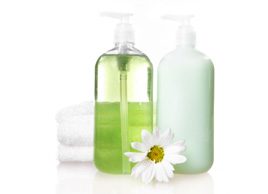Do your skincare products have to be the same brand?
If you’re mixing moisturizers, sunscreens and serums of all brands, be careful! Beauty editor Rhonda Rovan asks skincare experts about the dos and don’ts when it comes to blending your skincare products

Source: Best Health Magazine, November/December 2010
Q: Do my various skincare products all have to be the same brand?
Rhonda says: ‘Mixing it up’ is pretty common. Even though having matching tubes and bottles lined up in the bathroom is appealing, personally I’m not about one brand. However, it won’t surprise you to learn, as I did, that cosmetic companies have reasons why it’s not okay to be all over the map.
Mixing can either mean layering products, or alternating frequently (say, one day to the next) from one brand to another. That’s fine if you’re using basic glycerin-based moisturizers. But for products with active ingredients, say the experts, it’s another story.
Solen Marie, product development manager for the drugstore brand Dermaglow, made in Woodbridge, Ont., says you shouldn’t mix brands if they contain retinol, glycolic acid, salicylic acid or peptides. Although she says some people may be able to mix and never experience any irritation, ‘overusing them can irritate the skin, especially sensitive skin, so you run the risk of breakouts, irritation, redness and rash.
‘Each company uses a variety of these ingredients in their formulations and it’s possible that the ‘actives’ could be incompatible,’ she says. ‘You can’t be sure which ingredients are compatible with each other, as products are only tested for individual performance.’ She adds that the key to optimal results is to allow time. ‘Use up one active-ingredient product. Then you can switch brands.’
Michèle Lalande, a licensed pharmacist and scientific director of Dermtek Pharmaceuticals in Montreal, which makes the drugstore brand Reversa, says manufacturers tend to use the ‘same base ingredients, so you’re getting the same base formulas with similar molecules and similar preservatives.’ When components of that line are used in combination, you get the right total amount of ingredients.
In Dr. Suzanne Gagnon’s opinion, however, what’s more important is regimen. For damage prevention, the Laval, Que.-based dermatologist advises patients to’each morning’wash, apply anti-oxidant serum and then apply broad-spectrum sunscreen. ‘You could use a face wash from one brand, a serum from another and a sunscreen from an entirely different brand,’ she says. Nighttime is about repair. ‘Use a moisturizer ‘with either glycolic acid, retinol, vitamin C or ascorbic acid, or peptides.’ (Those with rosacea or eczema should consult with their dermatologist before using active ingredients.)
Generally, Gagnon prefers glycolic acid as ‘a drugstore choice ‘for building collagen, getting rid of dead skin cells and strengthening living cells.’ Efficacy is also about maintaining the right pH. Mixing products can neutralize the glycolic acid so that it’s not effective. But it’s not a concern ‘if you choose the right texture (a rich cream, or a lighter lotion) for your skin type and wait 30 minutes before layering another product over it.’
Also worth remembering: Read the product literature, and follow directions‘because when it comes to today’s products, educating yourself is one of the best ways to keep your skin looking good.
What are you curious about? Send your beauty questions to Rhonda. Subscribe today to get the full Best Health experience’and never miss an issue!’and make sure to check out what’s new in the latest issue of Best Health.




